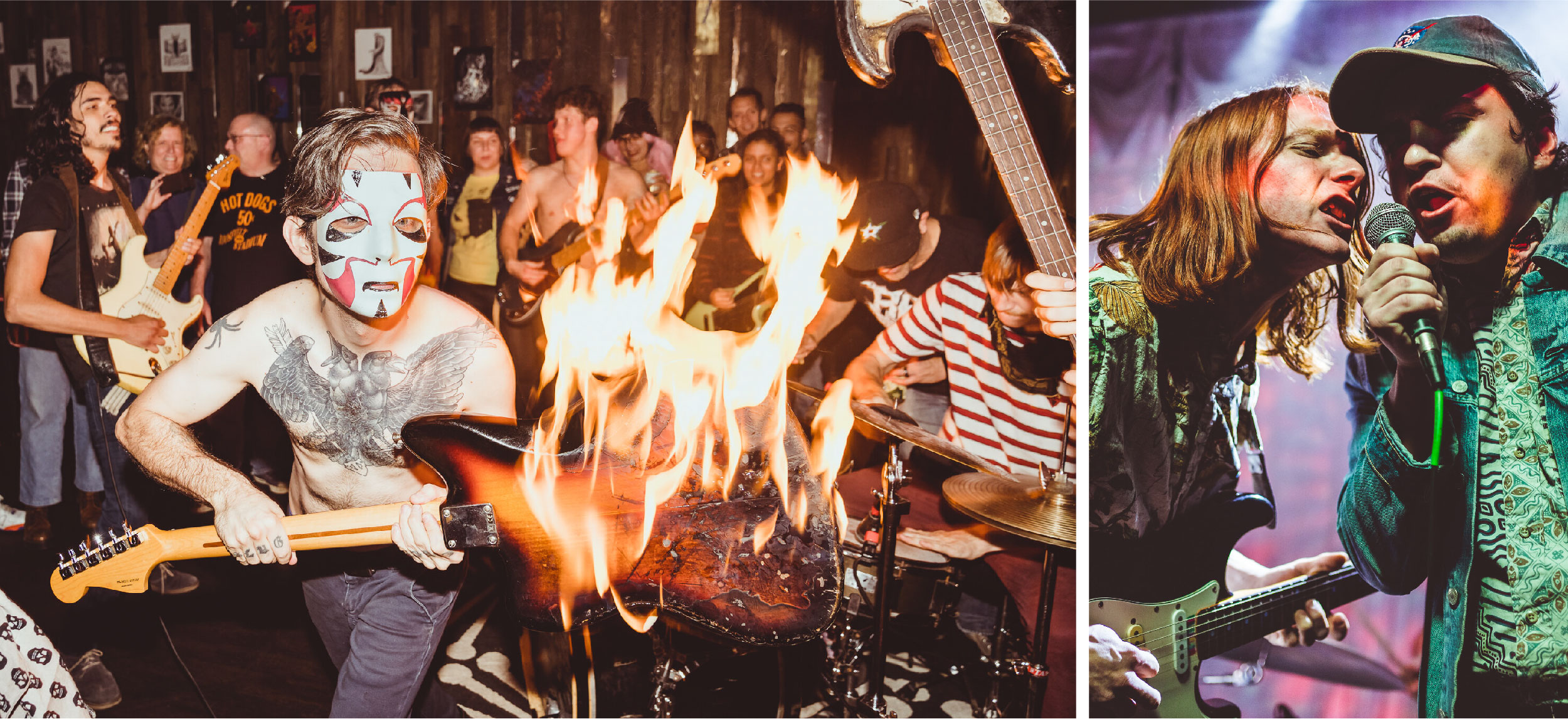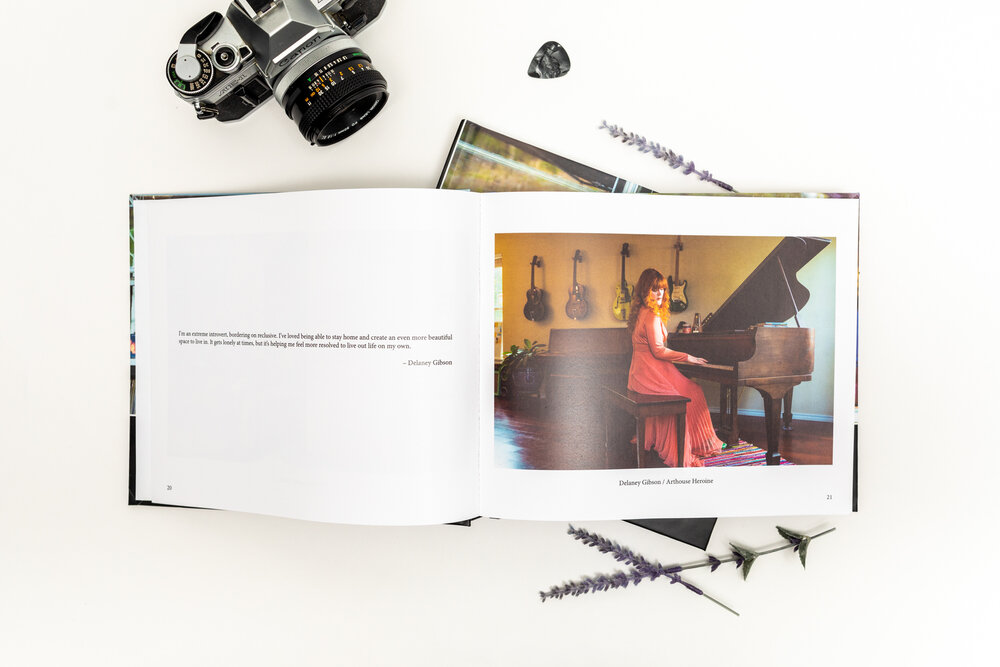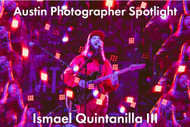Austin Photographer Spotlight: Ismael Quintanilla III
23rd Aug 2021
Local concert photographer, Ismael Quintanilla III has been documenting the magic that is live music since he was a young teenager. Quintanilla sees photography as an opportunity to build relationships with fellow creatives and to help build each other up. Viewers can clearly see the passion and respect that Quintanilla has for live music and the musicians behind the performances in each and every photo he captures.
I had the pleasure of learning more about his career via email.

How did you get started in photography? What drew you into concert photography in particular?
Ismael Quintanilla III: I got started in photography using Kodak disposable film cameras when I was around 14. I used to bring my disposable cameras to concerts and always tried to be front row at the shows to be able to capture the music up close.
I was drawn into concert photography because I became fascinated by how wonderful musicians and the music scene are. I wanted to learn more about what went on and off stage by documenting it through photography, since I carried a camera with me at all times.
What was the very first and last show you photographed? What’s one piece of advice you would give yourself going into the first show from the perspective of all you’ve learned since then?
IQ: First show, Judas Priest shot with a disposable film camera at La Villarreal in Mission, Texas. Last show, Leon Bridges at Hinterland Music Festival in St. Charles, Iowa. This festival was a very surreal experience since I hadn’t photographed (or attended) a large production music festival in almost two years.
The one piece of advice I would give myself going into the first show from the perspective of all I’ve learned since would be to be truly present with the experience during each and every show. Live music is a really dynamic medium and the moments that make truly great concert photography can be easily missed if you are not fully present in the experience. I missed a lot of great moments because I was distracted.

Do you prefer shooting portraits or live? What changes about your mindset and set up going into different shoots?
IQ: I love shooting portraits and live music, but each has a different mindset. In simple terms, portraits are more technical-based where I control lighting, posing, and energy to create a specific story. On the other hand, live music is more skill-based; there’s no control over lighting, posing, or energy, so I have to work with what’s given to create a story. Also, there are no redos when capturing live music, so you get what you get, which is exciting in its own way.
What’s your favorite band to shoot and why? Favorite Austin venue and why?
IQ: I don’t have a specific favorite band or venue to shoot, since different bands and venues bring different energy into the shows. I love an intense Psych-rock band setting their instruments on fire on stage at Empire Control Room, as much as I love a singer-songwriter intimate set at Central Presbyterian Church.

Do you have any bands that you regularly work with?
IQ: I work with a lot of bands regularly including Jackie Venson, Zach Person, Gina Chavez, Pleasure Venom, The Dead Coats, among others. Working with bands regularly creates trust and connection, which consequently enables creativity to a whole new level.

Tell me more about your photo book, “I AM HERE ALL DAY.” What was the inspiration behind putting the book together, and what was one of the more impactful stories you heard?
IQ: I AM HERE ALL DAY is a project turned book documenting 138 musicians through portraits taken between March and August of 2020, during a time when musicians were mostly at home. Along with the portraits, musicians share their stories of the ups and downs of the pandemic life.
My inspiration for putting together the book came from wanting to share how the pandemic had, and still is, affecting musicians and the music scene in the Live Music Capital of the World. All of the stories documented were very impactful, as each artist experienced the pandemic in their own unique way. Book is available at www.iamhereallday.com
What’s the creative process like for shooting musician portraits? Do artists usually come to you with a direction or is it a more collaborative process?
IQ: The creative process for shooting portraits varied from artist to artist. Sometimes, artists have an idea themed to an upcoming album or press release, so I work with them to realize their vision. Sometimes, artists just want interesting portraits and surrender the creative control to me. I tend to get very experimental during these times, especially with color lighting or creative lenses.

I understand you’ve shot at several different festivals including ACL, Fortress Festival, Levitation and SXSW. What’s been one of your most memorable festival moments? How does shooting at a festival compare to shooting a single show?
IQ: My most memorable festival moment was shooting Radiohead the first time I got to shoot Austin City Limits in 2016. I couldn’t believe I was about to photograph one of my favorite bands and my hands were shaking from excitement.
Sometimes single shows are very quick in-and-out experiences. Shooting a festival is all about capturing the magnitude of it all. The production is bigger, the grounds larger, and the energy is endless! Festival days are very long and exhausting, but extremely rewarding!
What are your most trusted pieces of equipment that you'd feel lost without?
IQ: My go-to combo was the Sony A7III and Sony FE 85mm f1.8, but recently I got a Sony A1 and Sony FE 135mm GM and I’m in love with them, especially shooting from the back of the stage at festivals. I recently used the 135mm lens to capture Black Pumas at Hinterland and I loved the sharpness and bokeh of the lens.
Do you have any upcoming projects or shows coming up that you feel excited about?
IQ: Recently, I bought a Polaroid SLR670-X, which is a modified SX-70 Polaroid camera with the capability to use external strobes. Since I got it, I have been doing a lot of Polaroid portraits. The combination of the Polaroid colors with lighting control, make very dreamy portraits.
You can find more of Quintanilla's work on Instagram and his portfolio website.

